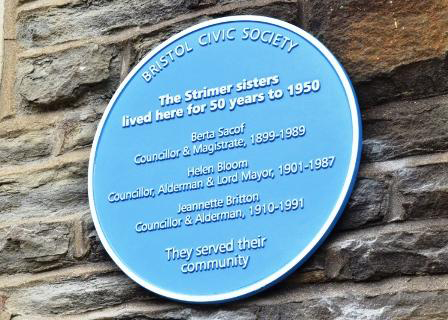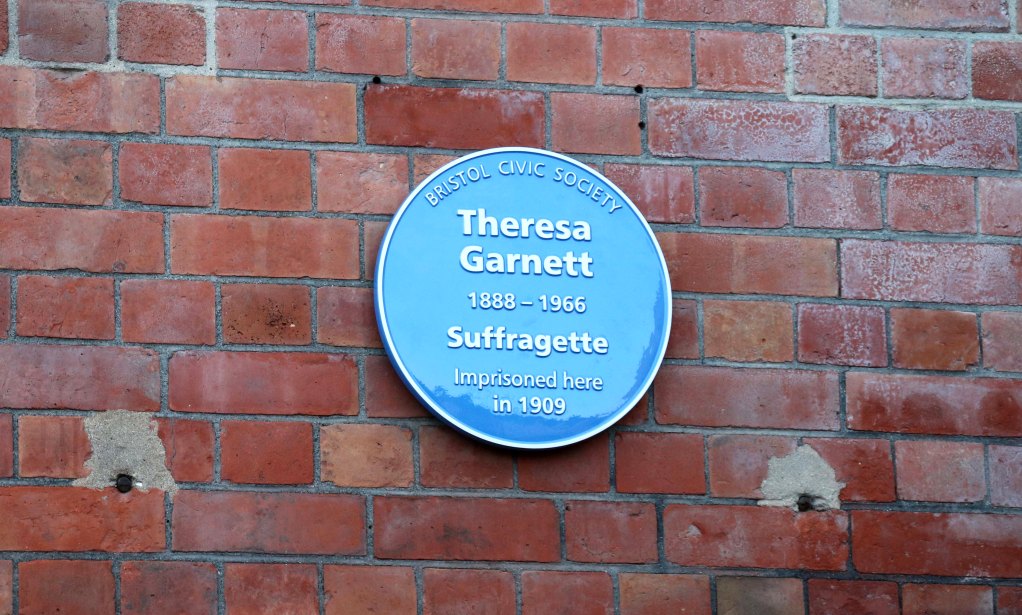While most people are vaguely aware of blue plaques, they remain something of a mystery. Where are they? What are they for? Why are they installed? Who puts them up? This month, Malcolm Ravenscroft, a member of the Bristol Civic Society’s blue plaque panel, sheds some light on these iconic features and outlines the history of three plaques installed in the last few years…
The Blue Plaques Scheme started in London in 1866, since then about 900 plaques have been installed in and around the city. Bristol started putting up plaques in the 1960s and the Civic Society has run the scheme since 2015.
Blue plaques can be dedicated to an individual or an organisation that has made an important contribution to the life of Bristol. They can also be installed in a location where a major event took place. They can help to remind us of significant people and events that may otherwise be forgotten. They add character and a sense of pride to a neighbourhood.
Bristol has always adopted a flexible approach to applications for a plaque. While London tends to focus on the arts, we believe that Bristol should recognise a much more diverse community. Since 2015, the Civic Society has supported the installation of 38 plaques. These have included those dedicated to a Bletchley Park code breaker, a conscientious objector, a folk music club and a narrow-gauge railway.
The first blue plaque to be installed since the Civic Society took over was unveiled by the Lord Mayor on 17 October 2015 at 8 Cranbrook Road, Redland. It was to recognise the work of three sisters who lived there.
The sisters – Berta Sacof (1899-1989), Helen Bloom (1901-1987) and Jeannette Britton (1910-1991), born Berta, Helen and Jeannette Strimer – were from a comfortable middle-class background in Bristol and led completely conventional lives until they had a collective political awakening in the 1940s.
They went on to pursue tireless political and community activism. For a while, all three were simultaneously Bristol City Councillors; two became Aldermen and one became Lord Mayor. Sitting on various council committees and other local organisations they played a significant part in shaping modern Bristol in everything from health and education to criminal justice.

In 2016, a beauty clinic at 5 Waterloo Street, Clifton received a blue plaque to recognise both the Troubadour folk club, which was based there from 1966 to 1971, and the first enterprise to use the address ‘Clifton Village’.
In the 60s, Georgian Clifton was dilapidated and bohemian, providing cheap accommodation for students, artists, musicians and writers. Inspired by New York’s colourful and alternative neighbourhood, Greenwich Village, the folk club in 1970 gave its address as ‘Clifton Village’ on posters and publicity material. This was the first time such an address was used. Clifton Village is now firmly established in our vocabulary, especially amongst estate agents, restaurants, and coffee shops.
The club had a serious reputation as the leading contemporary folk venue outside London. Its tiny stage attracted performers of national standing. The Incredible String Band, Al Stewart, Bert Jansch, Tim Hart, Maddy Prior, and the Strawbs all performed there. Over 80 folk fans and past performers attended the unveiling.

The 31st blue plaque was installed in October 2021. It made history as the first blue plaque to be installed on a working prison in the UK. Placed on the Old Main Gate to Horfield Prison, HMP Bristol in Cambridge Road, BS7 8PS, it recognises Theresa Garnett. She was a suffragette who was imprisoned at Horfield in 1909.
Theresa Garnett’s most famous action in the campaign for women’s right to vote took place at Temple Meads Railway Station in November 1909. She assaulted Winston Churchill with a whip, calling out” “Take that in the name of the insulted women of England!”
She was arrested for assault even though contemporary reports, including Churchill’s, stated that she had not actually hit him. Even so, she was found guilty of disturbing the peace and sentenced to a month’s incarceration in Horfield Prison. She was later awarded the ‘Hunger Strike Medal for Valour’ by the WSPU (Women’s Social and Political Union).
The plaque was unveiled on 1 October by the three most senior elected women on Bristol City Council: Deputy Mayor Asher Craig, and Cabinet members Helen Holland and Nicola Beech.
For more information about the Bristol Civic Society, visit bristolcivicsociety.org.uk



